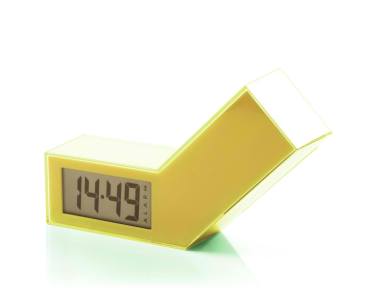Usability vs. Design: The Artistry of the Functional
by Kiran Lokhande
Thus, we can say that the aesthetic component often prevails over the utilitarian one. That is, we choose things based on how they look, whether it satisfies our aesthetic tastes, and then we pay attention to the purpose of this or that product. This is due to the fact that people are cultural beings, you can read about it at https://dissertationmasters.com/ and therefore form and decoration are in the first place at the time of choosing.
“On/Off” Design by Nina Tolstrup (Photo: http://www.lexon-design.com/lr98o1-on-off-orange.html)
The last few decades reflect the large impact that product design has on the experience of a user. Evidence is apparent in the emergence of products such as iPhones, tablets, and even non-digital items such as electronic toothbrushes. Further pushing its way into the life of the common user is the emotional and aesthetic appeal of a product. Products display an aesthetic through their form and design. The word aesthetic itself relates to a sense of perception, in which something appeals to the sensory tastes of a viewer or user. Aesthetics plays a role in the user-centered approach to design, which involves investigating and quantifying user experience to improve design.
For example, this Lexon alarm clock (above) employs a minimalist design and elegant form, yet its form also contains a functional purpose. When the alarm is set off, its unique shape begs its user to perform the instinctual action of tipping in order to deactivate it, rather than struggling to find a snooze button in their half-asleep state. The Lexon clock provides a functionality that achieves the fundamental purpose of the product (setting time and alarms), while also an aesthetic element that appeals to a user’s emotional sense of satisfaction and creativity. Functionally and aesthetically successful products have carved a presence in users’ everyday lives and the success of their appeal is ushering in a new age of product design.
Yet this also calls into question the distinction between aesthetics and design functionality. Which of the two is ultimately more important? Or are the two becoming enmeshed in one as products must stand out against a sea of competitors? So it is that designers face a balancing act of whether, if ever, should aesthetics be sacrificed for functionality, or the reverse.
In their 2005 article, “Different Roles of Product Appearance in Consumer Choice,” Creusen and Schoormans asked consumers to rank in importance six roles of products when choosing the best in a set of different telephone answering machines. These roles included aesthetics, symbolic value, function, and ergonomic information. 65% of participants mentioned aesthetics and 49.7% mentioned symbolic value as among the most important factors in their product choices. Comparatively, 35.9% of participants mentioned usability as a factor in their product choices. While Creusen and Schoormans’ findings recognize that multiple interrelated values and personal preferences affect product choice, there is still a large emphasis placed upon aesthetics. It is clear that aesthetics highly influence consumers.

Haakon Faste (Photo: Rocco Rorandelli; haakonfaste.com)
Carnegie Mellon University professor and interaction designer Haakon Faste, refers to the work of design innovator Roberto Verganti. Verganti’s research concludes that user-centered innovation is, in fact, essentially dead. He articulates a new model he calls “design-driven innovation,” in which design plays a primary role in the process of creating a product (Dell’Era, Marchesi, & Verganti). Verganti states that aesthetic values should inform a product design at all stages, because it is intimately connected with the business of selling a successful product. Comparatively, user-centered innovation is confined to the conventional processes of product design. User-centered innovation focuses upon improving iterations of a design based on what users want, while design-driven innovation pushes design toward a boundary past what is currently defined as useful or needed – a space which Faste terms as “uselessness.” That is, uselessness not due to the lack of function, but uselessness as lacking an intentional and “instrumental” intent in the current space of society.
In relation to the future of product design, Faste posits that user-centered innovation will always remain, but a larger focus will prevail on aesthetic appeal and how aesthetics links with functional but undiscovered human needs. While companies will always push toward improving their products to make them intuitive and flexible to user needs, they will also push the boundaries and explore past what is currently popular to pave a new future. Presently, certain companies have already pushed needs into society that simply had not existed before. Apple’s sleek, minimalistic suite of tools provide dynamic amounts of features to complement everyday living. Whole Foods markets organic foods sold in a purposefully wellness-minded environment to a population now increasingly concerned with goods that align with their lifestyle and values. Such product lines have branded human needs and intertwined them with an aesthetic to emotionally impress consumers. These companies have adopted principles such as design-driven innovation to pave the way toward a world of meaningful products that continuously redefine the consumer experience.
References and Further Reading
[1] Dell’Era, C., Marchesi, A., Verganti, R. (2010). Mastering Technologies in Design-Driven Innovation. Research-Technology Management. 39(1). 1-20.
[2] Faste, R.A. (1995). The Role of Aesthetics in Engineering. Japan Society of Mechanical Engineers Journal. (28). 385. Retrieved from http://fastefoundation.org/publications/










Trackbacks & Pingbacks